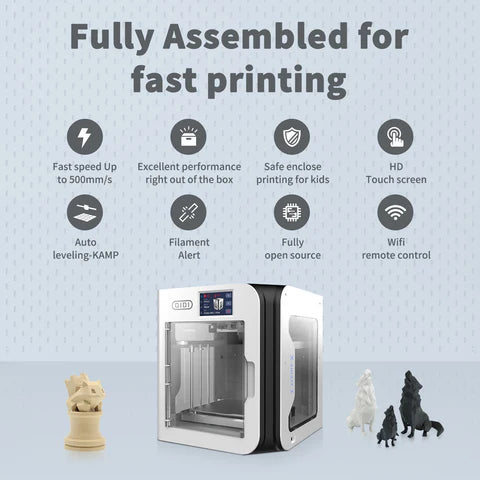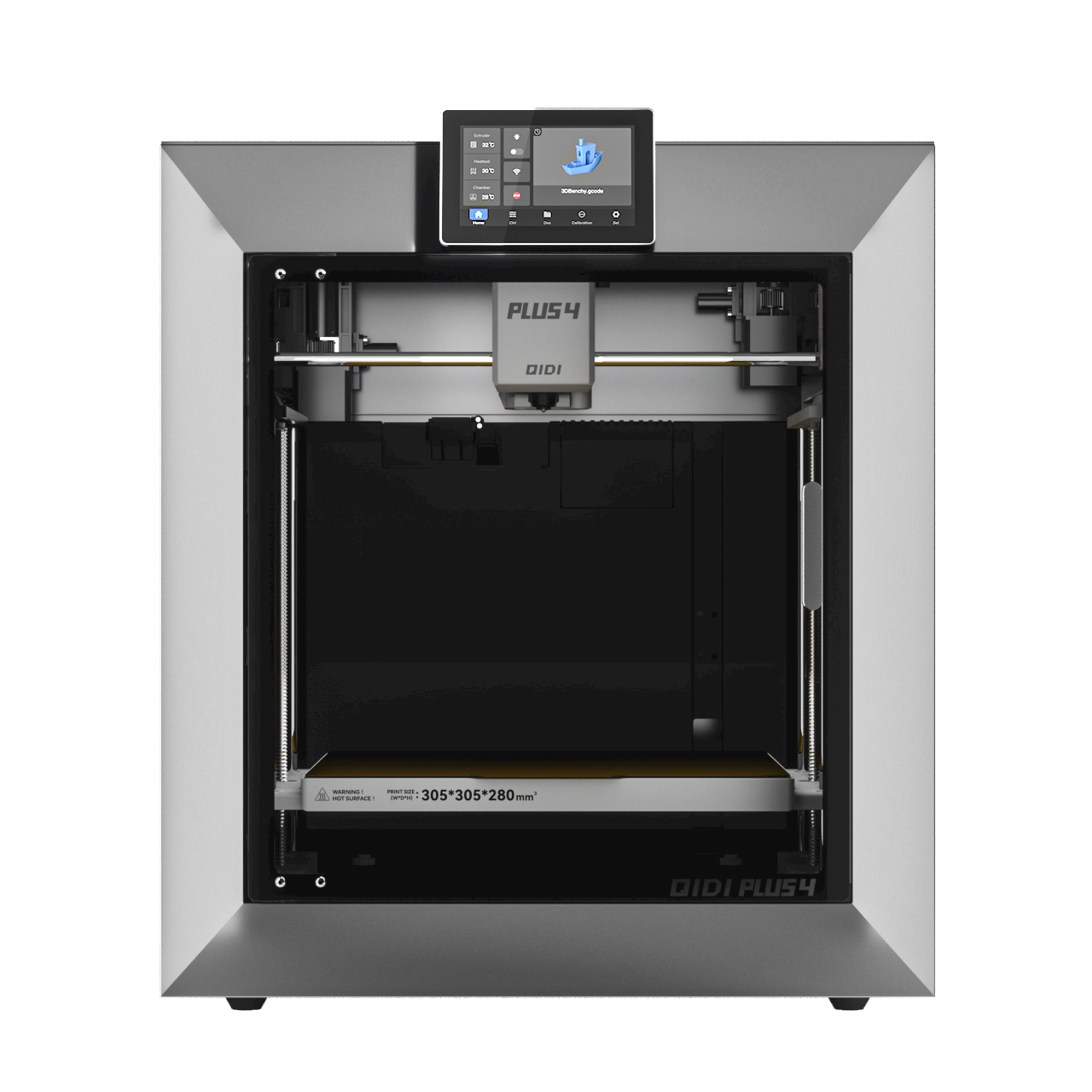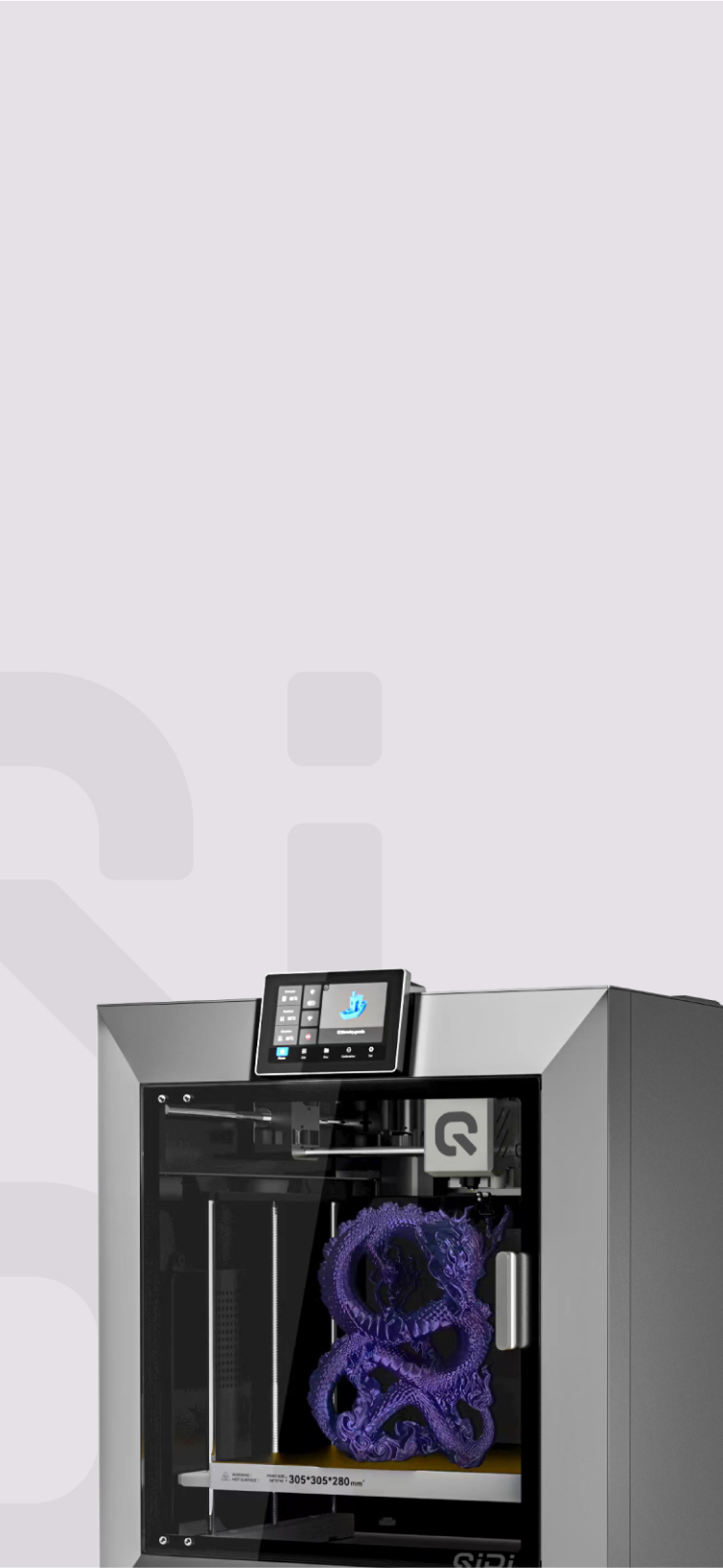Cómo eliminar las esquinas abultadas de impresión 3D


La protuberancia en las esquinas puede convertir una impresión 3D perfecta en una con formas redondeadas e imprecisas en los bordes. Esta guía aborda este problema directamente.
Echaremos un vistazo a las causas del abultamiento de las esquinas y también daremos algunas soluciones prácticas que eliminarán este problema. Desde ajustes básicos de calibración a métodos avanzados de modificación de hardwareSe cubren las mejores técnicas, desde el principiante hasta el experto, y permiten mayores logros técnicos al imprimir impresiones más nítidas y precisas, aumentando en general la calidad de los objetos impresos en 3D.

Causas de las esquinas abultadas en las impresiones 3D
Las esquinas abultadas surgen de varias causas fundamentales asociadas con la configuración de la impresora, el entorno circundante, y las propiedades del materialConocer las causas hará necesario buscar soluciones efectivas que aseguren impresiones de calidad con esquinas nítidas y precisión.
1. Demasiado filamento (sobreextrusión)
La sobreextrusión se produce cuando la impresora extruye más filamento del necesario. Este exceso de material se acumula en las esquinas y crea abultamientos. Este problema se agrava aún más si el cabezal de impresión cambia de dirección, ya que la presión en la boquilla puede provocar un flujo irregular del filamento.
2. Enfriamiento desigual
Pandeo Y el abultamiento puede ser causado por diferentes velocidades de enfriamiento en la impresión. Las esquinas tienden a permanecer más calientes durante más tiempo que el resto de una pieza.El enfriamiento parcial y la contracción de partes de la impresión a diferentes velocidades pueden provocar que la impresión se distorsione, especialmente en los puntos de las esquinas.
3. Impresión demasiado rápida
Las altas velocidades de impresión pueden causar problemas de calidad. Al moverse el cabezal de impresión en las esquinas a gran velocidad, puede arrastrar el exceso de filamento. Este tirón provoca abultamientos, principalmente en curvas cerradas, ya que el cambio rápido de dirección afecta la colocación del filamento.
4. Cama de impresión desnivelada
Lo primero y más importante, una cama de impresión no plana Puede causar problemas incluso en las etapas iniciales. Una superficie no uniforme produce inconsistencias en la primera capa, que pueden agravarse con la acumulación de la impresión. Estas suelen manifestarse como protuberancias u otros defectos, especialmente en las esquinas.
5. Configuración incorrecta de la primera capa
La primera capa es realmente fundamental para una buena impresión.Los problemas que pueden afectar el proceso de impresión en su totalidad son la altura de la boquilla o la cantidad de extrusión incorrecta. Una primera capa mal colocada puede generar inestabilidad y abultamiento en las esquinas de las capas superiores.
6. Temperatura incorrecta
La temperatura juega un papel importante en la calidad de impresión. Cuando la boquilla está demasiado caliente, el filamento permanece demasiado líquido y puede fluir con demasiada libertad, causando abultamientos. Cuando está demasiado fría, las capas pueden no adherirse bien entre sí, lo que también puede provocar puntos débiles que pueden abultarse o deformarse.
Estrategias para eliminar las esquinas abultadas en la impresión 3D
Hay varias maneras de eliminar una esquina abultada. Cada método ataca la causa del problema, permitiendo obtener impresiones más nítidas y precisas.
1. Calibre su impresora
Calibración adecuada Esto evitará que las esquinas se abulten. Primero, ajuste los pasos del extrusor para asegurar que expulse la cantidad correcta de filamento; luego, ajuste la configuración de avance de presión para minimizar el rezumado en los cambios de dirección. Para la cama de impresión, utilice una técnica de nivelación probada, como la nivelación de malla o la nivelación automática de la cama, para crear una superficie de impresión perfectamente plana.
2. Optimizar la velocidad de impresión
Encontrar la velocidad de impresión adecuada es una cuestión de equilibrar calidad y eficiencia.Con velocidades más lentas, se obtienen mejores resultados, especialmente en modelos detallados. También puedes aumentar el tamaño de las impresiones en áreas con menos detalle aumentando la velocidad y reduciéndola en esquinas y elementos complejos. Experimenta con diferentes velocidades para... Encuentra el punto ideal donde tu impresora y filamento funcionan mejor.
3. Mejorar la refrigeración
También evita la deformación y la formación de abultamientos. Ajuste la velocidad y la dirección del ventilador para que el flujo de aire sobre la impresión sea uniforme. Si es posible, utilice un ventilador más potente o direccional. Para un enfriamiento capa por capa, aumente la velocidad gradualmente a lo largo de la impresión. Cuanto más tarde en imprimirse una capa, más tiempo se enfriará el objeto en las partes más pequeñas e intrincadas.
4. Ajuste la configuración de la primera capa
Una primera capa bien calibrada es fundamental para una impresión exitosa. Ajuste con cuidado la altura de la boquilla para que sea lo suficientemente baja como para que el filamento se aplaste ligeramente, pero no tanto como para que roce la cama. Calibrar el ancho de la primera capa es necesario para lograr una buena adhesión. Para imprimir la primera capa, equilibre la adhesión con la sobreextrusión experimentando con multiplicadores de extrusión.
5. Ajustar la configuración de temperatura
Una de las variables más importantes con respecto a la calidad de impresión es temperaturaQuiere que la temperatura de la boquilla esté optimizada para un flujo de filamento fluido sin sobrecalentamiento. La temperatura de la cama afectará la adhesión de la primera capa y la estabilidad general de la impresión. Los diferentes materiales tienen perfiles de temperatura específicos, dónde EPL Generalmente requiere temperaturas mucho más bajas que abdominales o PETG. Siempre debe consultar las recomendaciones del fabricante y realizar ajustes según su impresora específica y environment.QIDI Las impresoras 3D están equipadas con cámaras de control de temperatura, lo que puede garantizar mejor la calidad de impresión general.

Soluciones avanzadas para problemas persistentes de abultamiento en la impresión 3D
Cuando el abultamiento de las esquinas no se puede solucionar con métodos estándar, se pueden aplicar soluciones más avanzadas. Estas soluciones incluyen actualizaciones de hardware y sofisticados ajustes de software que garantizan una calidad óptima en las impresiones.
1. Actualizar los sistemas de refrigeración
En su impresora, Reemplace el ventilador original por un modelo más potente.o instale varios para cubrir más área. Los ventiladores tipo soplador pueden generar corrientes de aire más potentes y concentradas. Con un conducto de refrigeración parcial especializado, se puede dirigir el flujo de aire con gran precisión justo donde se necesita y mejorar considerablemente la calidad de las esquinas.
2. Mejorar la estabilidad de la plataforma de impresión
Añadir soportes de apoyo Para reducir el movimiento de la cama. También se puede optar por una placa de cama más gruesa o añadir una superficie de vidrio o metal rectificada con precisión y perfectamente plana. Si la estabilidad es un problema, se puede considerar el uso de un sistema de placa de construcción magnética flexible para disfrutar de la mejor estabilidad durante la impresión y una fácil extracción de la impresión.
3. Refinar la configuración de la segmentación de datos
Aplicar marcha por inercia Para liberar presión antes de que la boquilla se desplace hacia una esquina. Active la limpieza de la pared exterior para lograr transiciones más limpias en las esquinas. Los ajustes de peinado reducen los movimientos sobre el área impresa y minimizan la supuración y las abultamientos. Estos ajustes muestran los ajustes detallados que se aplicarán en el proceso de impresión.
4. Implementar código G personalizado
Ajustes de velocidad específicos para cada curva Se pueden crear comandos de retracción para reducir la velocidad de impresión justo antes de llegar a ángulos agudos. Agregue comandos de retracción justo donde sea necesario para evitar la acumulación de material. Luego, cree secuencias de código G personalizadas de inicio y fin para una mejor adhesión a la cama y acabados más limpios. Esto puede mejorar considerablemente la calidad de las impresiones, especialmente en áreas problemáticas como las esquinas.
Consejos de diseño para evitar que la impresión 3D se abulte
Cuando los ajustes de la configuración de la impresora y el hardware son importantes, las decisiones de diseño inteligentes también pueden lograr impresiones sin abultamientos en las esquinas. Aquí tienes consejos de diseño que te ayudarán a mejorar la calidad de impresión desde la fase de modelado.
1. Modificar la geometría del modelo
Añadir chaflanes o filetes Para las esquinas afiladas de su modelo. Algo tan pequeño como esto puede reducir significativamente la concentración de tensión, mejorando considerablemente la calidad de impresión. Para los chaflanes, un ángulo de 45° suele ser adecuado, aunque los filetes deben tener un radio acorde al tamaño de la boquilla. Al diseñar, considere cómo se imprimirá su modelo capa por capa.
2. Optimizar la orientación de la impresión
Elige la mejor orientación Para minimizar los voladizos y reducir la necesidad de soportes en su modelo, coloque las características críticas, como las esquinas afiladas, de forma que no queden paralelas a la plataforma de impresión. Esto puede ayudar a distribuir la tensión de forma más uniforme y reducir la probabilidad de abultamiento. Considere dividir los modelos complejos en varias partes para facilitar la impresión y el ensamblaje.
3. Seleccione los materiales adecuados
Los distintos filamentos se comportan de forma única durante la impresión. Algunos materiales, como EPL, son menos propensos a deformarse y abultarse en comparación con abdominales o PETGConsidere usar filamentos con compuestos añadidos que mejoren la estabilidad dimensional. Para modelos con detalles finos o esquinas afiladas, pruebe filamentos diseñados para impresión de alta resolución.

¡Obtenga impresiones 3D más nítidas ahora!
Arreglar esquinas abultadas en la impresión 3D se basa en comprender el problema y aplicar la solución adecuada. Los aspectos básicos son la calibración de la impresora y la configuración adecuada de la temperatura. Los más complejos implican actualizar el sistema de refrigeración o modificar la configuración del cortador. Cabe destacar que, a menudo, un buen diseño puede prevenir muchos problemas desde el principio. impresora 3D Será diferente y llevará tiempo y experimentación continua. Sigue estos consejos y estarás más cerca de crear impresiones 3D más nítidas y con mejor aspecto.


 Q2
Q2





